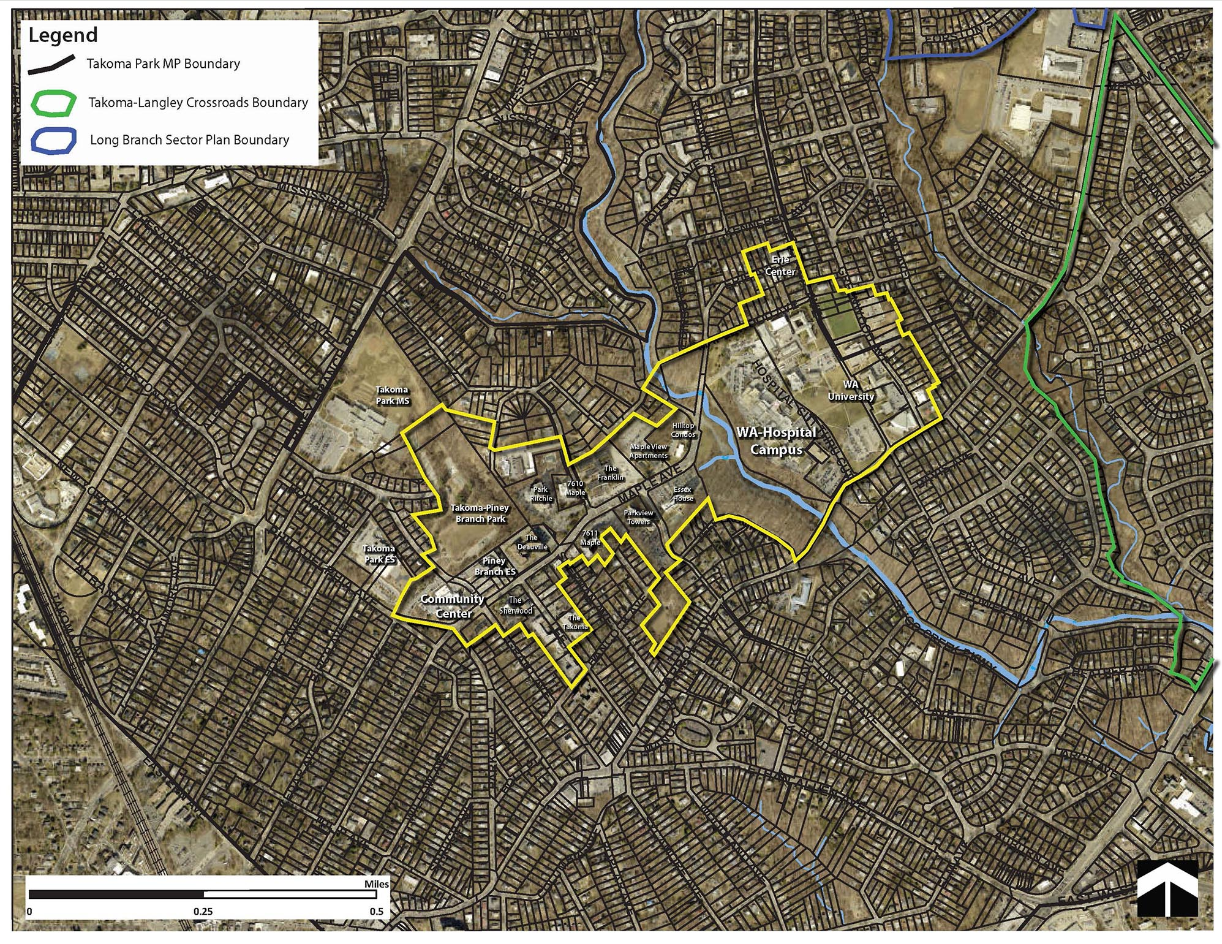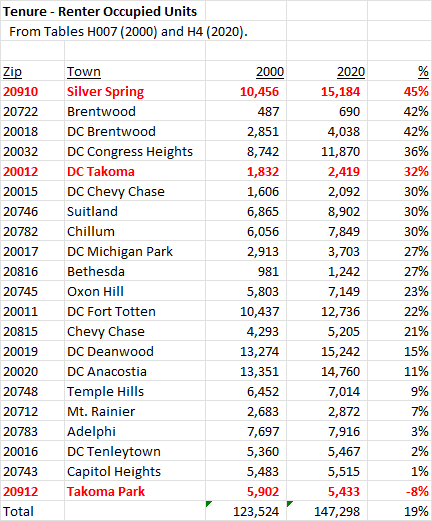By Adam Pagnucco.
Last week, the Montgomery County Council passed the Takoma Park Minor Master Plan Amendment, which would rezone the former Washington Adventist Hospital site and nearby areas around Maple Avenue. Supporters cheered. Opponents, many allied with County Executive Marc Elrich (who lives close to the plan area), predicted doom. Both sides are animated by the assumption that the plan could generate more than 3,500 new housing units, which is the plan’s maximum yield at buildout.
Both sides are wrong.

The plan’s boundaries. From the City of Takoma Park.
I have been watching development battles in this county for more than two decades and here are two observations.
First, I doubt that there has ever been a master plan here that was fully built out before its successor plan was adopted. Maximum numbers mean nothing.
Second, development supporters and opponents agree on one thing: just because a government puts something on paper, that means it will happen. Sometimes that is true and sometimes it’s not. The X factor is something that bureaucrats, activists and politicians alike often forget about, much to my amazement – this thing called MARKETS.
In Takoma Park, the rental housing market has been frozen for a long, LONG time. The reason is the city’s infamous rent control law. Passed in 1981, the law limits rent increases in individual condo units and multi-family rental units to the increase in the Consumer Price Index and exempts new construction for five years. A report commissioned by the city government found that the city has been losing rental units for years, young people struggle to find housing in Takoma Park and no multi-family buildings have been constructed in the city since the 1970s. Salim Furth, a housing economist and city resident, found that the law led to mass conversions of rental units into condos. This is exactly what happened to Montgomery County in the 1970s, the last time that the county had rent control. (Despite that experience, the county council passed a new rent control law last year.)
Here’s how unusual Takoma Park’s rental housing market is. The table below shows the change in renter-occupied units between the 2000 decennial census and the 2020 decennial census for every zip code along the Maryland-D.C. border in both jurisdictions. During that period, Takoma Park was the only jurisdiction that had a rent control law covering new construction. D.C. has a rent control law, but it’s weak and does not cover buildings constructed after 1975.

Out of 21 border-adjacent zip codes, Takoma Park’s 20912 is the only one that lost rental units over this 20-year period. Rental stock in the area as a whole grew by 19%.
It gets worse. D.C.’s Takoma zip code, which is right across the border from Takoma Park, added 32% more rental units. Downtown Silver Spring, which has the same planning board and the same county council as Takoma Park and is right next door to the city, added 45% more rental units. These are big supply expansions in Takoma Park’s vicinity. Just not in the city itself.
Want more? There are several zip codes to the south with lower average rents and higher crime rates than Takoma Park. Developers invested more capital in those communities than in Takoma Park. Want to guess why?
Of course, it’s not just about rent control. Fighting development is a time-honored tradition in Takoma Park. Some city residents have been fighting housing at the Takoma Metro Station for 25 years even though that station is not even inside the city. Development opponents won an 8-year fight against the Takoma Junction project two years ago. The offensive monstrosity was a two-story building on a parking lot.
If residents are going to fight like hell against a two-story building, what do you think will happen if a developer proposes a 200-unit high rise at the Washington Adventist site?
If city leaders really want more housing, they would repeal their rent control law. If they do so, here’s what will happen. First, the pent-up demand for housing documented in the city’s own report would immediately drive up rents, infuriating the city’s substantial renter population. Second, those higher rents might indeed attract interest from developers for the first time in forty years, thereby infuriating the city’s huge bloc of development opponents.
City leaders aren’t stupid. Of course this won’t happen.
And so Takoma Park’s development opponents have nothing to worry about. If the city’s rent control law by itself doesn’t kill development, political opposition will. This is just as predictable as the death of the Takoma Junction project.
The big question is not whether Takoma Park will see lots of new development. It’s whether Montgomery County, which passed its own rent control law last year, will follow Takoma Park’s example and freeze its own rental housing market as well.
